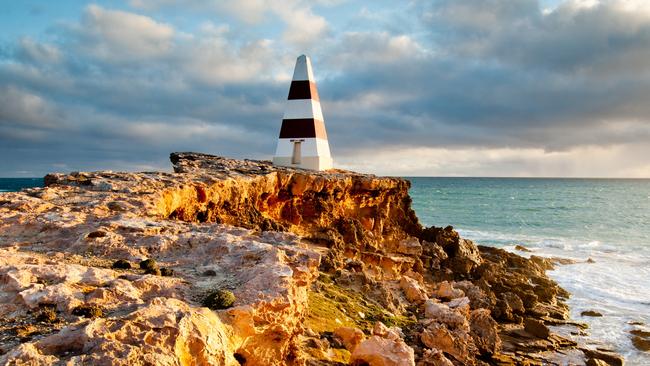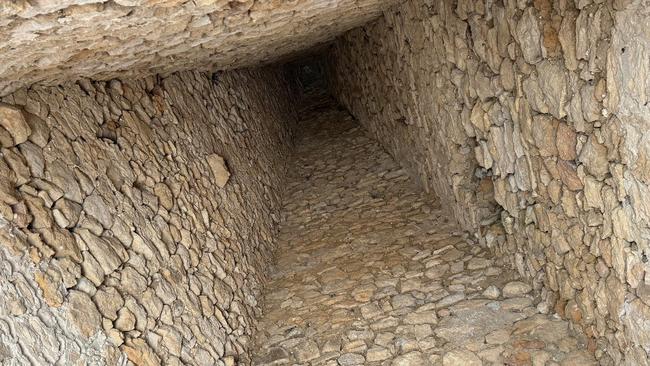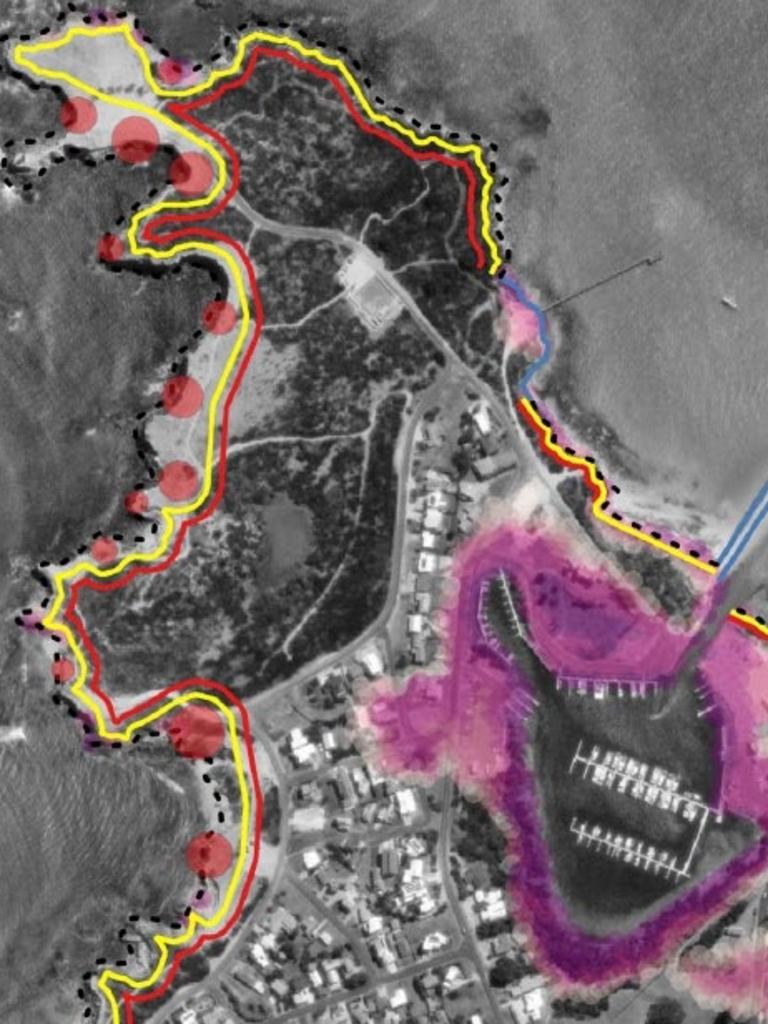Robe Obelisk to fall into sea by 2050, working party recommends replica
It’s weathered the ocean for 170 years – but now one of the state’s best-known landmarks is doomed. So what have locals planned?
SA News
Don't miss out on the headlines from SA News. Followed categories will be added to My News.
Not even the $1m option of sawing the iconic Robe Obelisk in half and helicoptering it away for relocation will save the SA landmark, which is now all but certain to be allowed to fall into the ocean within decades.
A working group looking into ways to save or commemorate the obelisk – which has withstood ocean storms for 170 years – has instead recommended a replica be built, likely near Robe’s historical Old gaol ruins.
That replica could be anything from a rebuilt obelisk to an interpretative replica, a hologram or one that includes First Nations storytelling.
The ground beneath the Limestone Coast town’s 12m landmark is being honeycombed by waves and the tourism attraction has been fenced off for years for safety reasons.
The obelisk, erected on Cape Dombey in 1855 to guide ships, will fall into the sea as soon as 2051 – or sooner, depending on storms. Coastal erosion forecasting shows the entire headland will be gone by 2050.


Robe Council decided in June it couldn’t afford the price tag of investigating ways to save it but a community outcry led to a working group to examine all options.

Robe Council CEO Nat Traeger said the replica could take any form.
“Some of the advice we’ve had from the Dept of Water and Environment is around the loss of the heritage status of the obelisk, if it’s just replicated at another site,” Ms Traeger said.
“It’s important the working party turns its attention to various forms of replication – that could be a big-picture interpretative centre with Indigenous and First Nations storytelling, the obelisk storytelling, the Limestone Coast’s environmental significance or maritime significance – or whether a light and sound show, or hologram.
“We need to make sure we include our First Nations from the get go – replication doesn’t just mean rebuild what you can see.”
A public meeting previously heard a 12m replica was discounted because it could cost about $1.5m, while relocation was ruled out over safety risks.
The working group found preservation, relocation were unsafe and “inconsistent with the coastal hazards and risks associated that affect Robe to 2100”.
It instead recommended council replicate the obelisk, suggesting four different sites across Robe – its preference is opposite the old gaol ruins, where it would be elevated and visible from the town.
The group looked at preserving the obelisk with hardened sandstone, protective rock armour, or a protective seawall – using 16T boulders – but all were problematic, could cost in the millions and require ongoing maintenance. Meanwhile, erosion would continue.
Relocation ideas include sawing the obelisk into pieces horizontally and “airlifting to a new site on the headland by helicopter”.
It also considered telescopic boom lifts, but relocation would cost at least $1m, had high safety risks and the weathered obelisk could fall apart anyway in the process.
Three kinds of replicas were considered, from a faithful reconstruction with sandstone to a interpretative $150,000 concrete slab or $200,000 modular structure, or a structure of some kind.
An interpretative visitor centre and cafe was also considered, and one with views of the obelisk as it declines.
The group recommended more work on a final design and discussions with First Nation groups. Ongoing discussions with a mason are continuing, and the report did not include possible prices.
It’s also recommended investigating fundraising and the timing of a replica – whether that is built before or after the obelisk falls.
Robe Council will consider the report on Wednesday.






